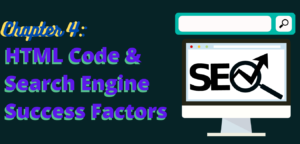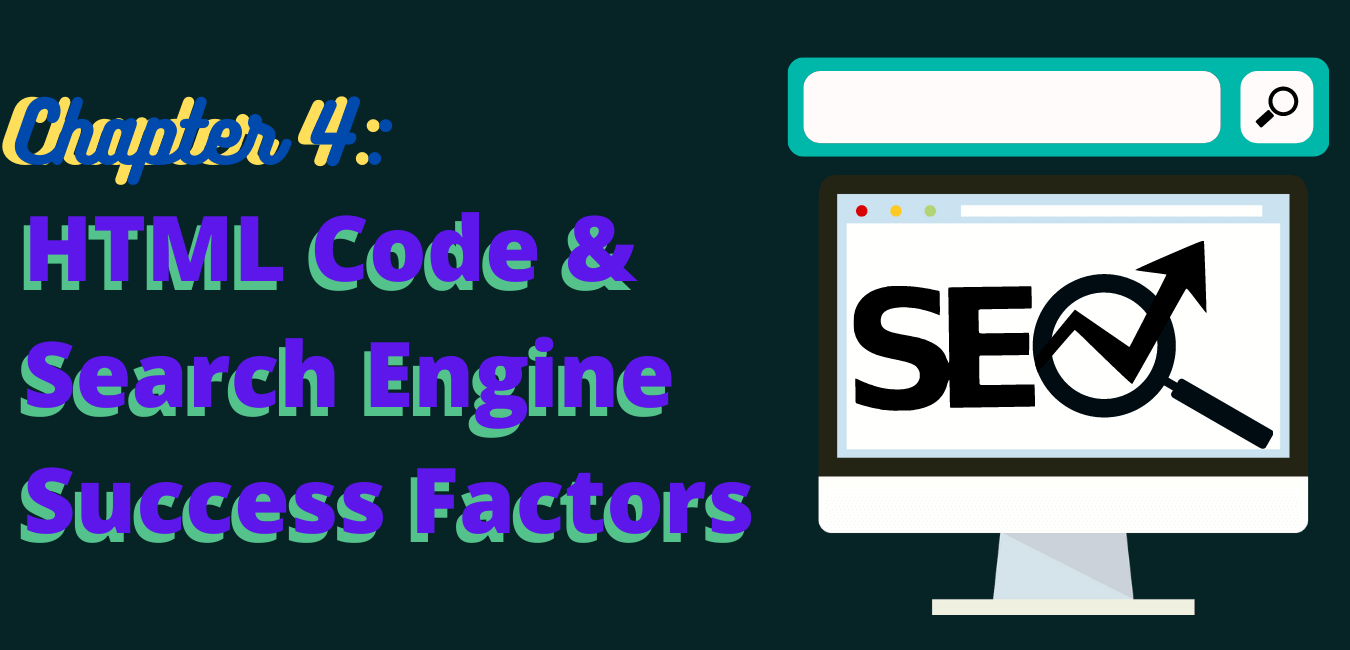
HTML Code & Search Engine Success Factors
the HTML tags that you should be using to send clues to search engines about your content and enable that content to render quickly.
Are you describing movie showtimes? Do you have ratings and reviews on your e-commerce pages? What’s the headline of the article you’ve published? In every case, there’s a way to communicate this with HTML.
Table of Contents
HTML Code & Search Engine Success Factors

Titles
HTML titles have always been and remain the foremost important HTML signal that search engines use to know what a page is about. Your titles convey what your pages are close to users also as search engines, so it’s important that they’re unique and descriptive.
Titles are specified through the HTML title tag. This is typically what shows as the clickable link in a search result. Your titles should be concise, accurately reflect your page’s content and have the keywords you would like to rank for — without keyword stuffing (a Toxin).
There could be times when search engines prefer to present searchers with another title if they deem it more appropriate and descriptive. To increase the chances of the title you created getting shown to searchers, consider the terms you would like your page to be found for, then use those terms in an accurate, unique title.
[Pro Tip]
“In most cases, Google will use the title in the meta description for their snippets, but sometimes they don’t and we’re seeing that if they don’t like the title for one reason or another, they would pick the H1 [instead].
A page can rank for a lot of different terms and when somebody’s searching for something, that title might not be a good fit . . . That’s the main driver for Google to be overriding what you do on the titles and the snippets — because the snippet that is going to come up is not going to be a great match for this specific query.
That’s why the idea of ‘Oh, you have to have exactly the same title as the H1,’ makes no sense. It’s better to have them different so that you’re giving Google a better backup. So, when users search, Google can use the title, but if they’re searching for secondary terms — because a page can rank for hundreds of keywords — they can use the H1 as a backup.” -Hamlet Batista, CEO and founder of RankSense.
Descriptions
The meta description tag is an HTML element that will be wont to suggest how you’d like your pages to be described within the search listings. Descriptions to seem below the headlines within the search results.
Although it is not technically a ranking factor, it’s a “success” factor. Adding a well-crafted description can help entice users to click your result over the others on the page.
As with titles, the search engines might not always pick the outline you provide.
“I think we have a really similar approach to Google within the sense that we’ll pick something that’s not your official description if we expect it better represents your document or your page,” says Frédéric Debut, senior program manager lead for Bing.
“My top advice would be, if you would like your own title and your own description to be utilized in the search results, confirm that they’re really representative of what the document is about.”
“Don’t attempt to leave of your thanks to even just slightly misrepresent things,” Debut advises. “If we expect your title and outline, as written in your meta tag, aren’t 100% accurate of what your page is about, then that’s when the system is going to look very closely at other parts of your document and getting to extract a caption that it thinks is more relevant.”
Structure
“Structured data gives search engines a much better understanding of the content on your page,” Jessica Bowman, owner of enterprise SEO consultancy SEOIn-house, explains, adding, “For users, it enhances the listing to offer them more insight into what’s available thereon page. From a brand perspective, it gives eye candy.”
Structured data could also be a code format that permits you to inform the search engines what your content is about in their one “language.” Specific schema markup (code) can make it easy for search engines to digest and understand the page content and structure. Bowman says SEOs got to master the way to properly implement schema on their sites wherever appropriate.
The results of structured data often translate into what Google calls a “rich snippet,” a search listing that has extra bells and whistles that make it more attractive and useful to users.
“Structured data are tremendous for search results, because your result are often full of rich media, images, pricing information, ratings then on — and through a carousel versus just the blue link,” says Detlef Johnson.
For example, let’s say you run a music publication. One of your articles may be a review of Taylor Swift’s album 1989. Using structured data markup, you’ll inform search engines that you’re pertaining to an album and not the year 1989.
Although the utilization of structured data isn’t an immediate ranking factor, it’s going to yield some advantages on the search results page. Compared to plain search results, rich results offer additional information or functionality which will be more attractive or useful to users. Rich results often appear prominently on the results page, which may increase brand awareness and drive traffic to your content.
There is concern that rich results eliminate the motivation for users to click through to your page, which limits marketing opportunities. All other factors being equal, an upscale result’s still more likely to urge clicks than a typical result.

Headings
Headings are a hierarchical way to organize and identify key sections of your content. A page will typically have a headline. Behind the scenes, in the HTML code, the headline is wrapped in an H1 tag. This page has a headline and several sub-headings to break up the copy into sections. Those sub-headings use H2 tags, the next “level” down from H1 tags.
Wrapping your headings in header tags is what generates the special formatting. For example, the name of this section, “Hd: Headings” is wrapped in an H2 HTML tag, as follows: <h2>Hd: Headings</h2>.
“You have to first think about the experience of the user — how do headings improve it?” Hamlet Batista, CEO, and founder of SEO platform RankSense says. “If you just put a blurb of text from start to finish, it’s going to be very difficult for the user to read and follow it. That’s what the purpose of headings is: to make sure that you can quickly scan the page, understand what it is about, and even know whether you want to spend the time to read it completely.”
Using multiple H1 tags (or none at all) is not going to trip up Google’s algorithms, Webmaster Trends Analyst John Muller has said. However, he also notes that having clear, semantic headings is useful for search engines to understand pages and makes your content more accessible to users.
It is good practice to use keywords in your H1s and H2s to give search engines a better idea of what your page is about. Do not spam your headings with keywords. Use them to make your content easy for users and search engines to navigate…
AMP
“The main benefit for AMP is you get super-fast pages,” says Eric Enge, head for consulting company Perficient.
AMP, which stands for Accelerated Mobile Pages, is an open-source initiative backed by Google and aimed toward enabling publishers to possess quickly loading pages on mobile devices. Google officially integrated AMP listings into its mobile leads in February 2016.
Google’s John Mueller has stated repeatedly that AMP isn’t a politician ranking factor. “But, page speed is,” notes program Land’s Greg Sterling.
“And, albeit they said AMP isn’t a ranking factor if you’re a news publisher, the only way you get into mobile News carousels — which is on the search results page during a prime location — is by using AMP,” Sterling adds. “And so, it’s not a ranking factor, but it privileges you on the page.”
AMP is not just for news publishers. “What you’ll get [even if you’re not a news publisher], is far higher user engagement together with your page and better engagement rates because your pages are super fast,” Enge points out, explaining that zippier pages may improve your mobile conversion rates.



1 thought on “Chapter 4: HTML Code & Search Engine Success Factors”